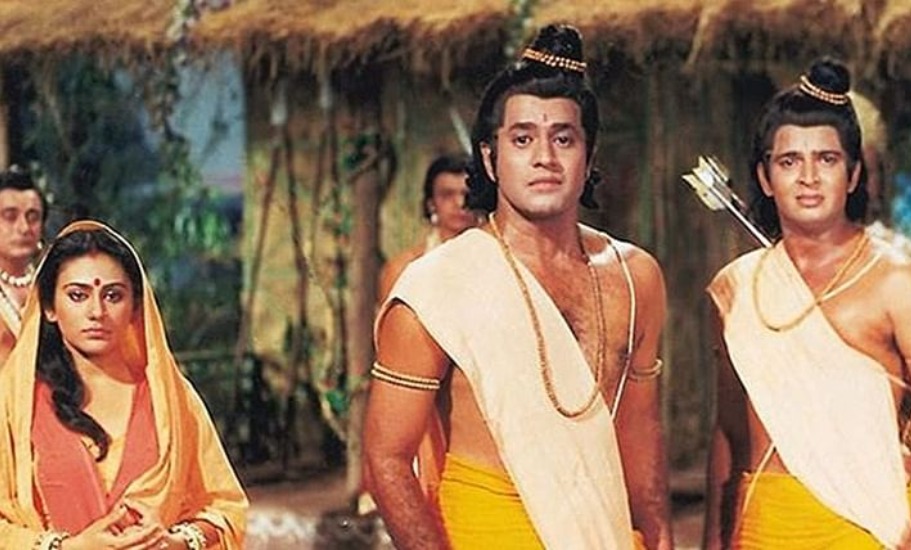
The all-pervasive Ramayan constant: From (Ram) Janmabhoomi to Mandir
Ramanand Sagar’s ‘Ramayan’ was first telecast between 1987 and 1988 on Doordarshan, and it will have a rerun starting March 28 on popular demand. Union Minister Prakash Javadekar on Friday announced the decision to re-telecast the 78-episode series on the epic written by sage Valmiki and modelled after the version by Tulsidas.

‘Ramayan’, the 33-year-old television series that will see a rerun on DD National for entertaining audiences during the COVID-19 lockdown, has a legacy that transcends religion and spirituality, striking a chord with politics even today.
Ramanand Sagar’s ‘Ramayan’ was first telecast between 1987 and 1988 on Doordarshan, and it will have a rerun starting Saturday (March 28) on popular demand. Union Minister Prakash Javadekar on Friday announced the decision to re-telecast the 78-episode series on the epic written by sage Valmiki and modelled after the version by Tulsidas.
In its first run, ‘Ramayan’ has been one of the few TV series that garnered a huge set of audiences — one-eighth of India at the time — with a staggering viewership of 100 million.
Creating a space for Hindu nationalism
The series is said to have been instrumental in creating a space for Hindu nationalism, which observers have often counted as one of the major forces that led to the deafening chorus for Ram Janmabhoomi, ahead of the demolition of Babri Masjid in December 1992.
The BBC, in an article on the impact of the series, has quoted Arvind Rajagopal, professor of media studies at NYU and author of the book ‘Politics After Television’, who explains the political mileage gained from it. Even though India then had a Congress government led by Rajiv Gandhi, he said it was the Bharatiya Janata Party that actually walked away with most benefits.
Related news: After three decades, ‘Ramayan’ returns to small screen on popular demand
During the telecast of the series and after it, Hindu nationalist organisations and the Sangh Parivar capitalised on it, dressing up volunteers as Lord Ram and his brother Lakshman, calling for Ram Rajya (rule of Lord Ram in Ayodhya), as they set up a nationwide campaign for the reclamation of the land on which the mosque stood.
The movement saw people being asked to send a brick or a rupee, thus reaching out to both the rich and the poor to be a part of it. BBC also quoted Rajagopal as saying that these sentiments were mirrored in the series as well.
“In one scene, Lord Ram reveals he’s carrying earth from his birthplace — this is not in any version of the Ramayana I’m aware of — and spoke to a specific political moment, the Ram Janmabhoomi movement. It’s an example of how the series reflected politics, and vice versa,” he said.
Related news: New Babri Masjid will put Dhannipur village on the map, hope villagers
Eventually, a huge crowd of over a lakh people razed the mosque down in 1992, triggering communal violence across the country.
Arun Govil, the actor who played Lord Ram in the series, along with director Sagar, were sought after by both Congress and the BJP to campaign for them during elections. Dipika Chikhalia (Sita) and Arvind Trivedi (Ravan), who were at the heights of popularity, joined the BJP, contested 1991 elections and became MPs from Gujarat.
Ramayan made gods out of actors
Govil, in many of his interviews after the series’ success, had stated wherever he went people touched his feet and took his blessings. In fact, this veneration, he noted, cost him his career, as he was trapped in the role of Ram, and none wanted to cast him in another role. Even recently, Govil starred in a stage play as Ram.
When the series was aired, it was a common sight to see ‘aarti thalis’ being taken out and the actors appearing on TV being worshipped and garlanded across households. When the series aired on Sunday mornings, roads were noted to be deserted and even on the move, buses and trains were halted and passengers would queue up outside any place with a TV to watch the series.
Rerun of Ramayan in the time of Ram Mandir
Ramayan, in its rerun too resonates with the political scenario today. It has been almost six months since the Supreme Court’s verdict in favour of the construction of Ram Temple on the site. The BJP in its second tenure has continued to employ terms like Ram Rajya to stress its commitment to Hindutva.
On Wednesday, a few hours after Prime Minister Narendra Modi called for a lockdown of the country to break the chain of transmission of COVID-19, Uttar Pradesh Chief Minister Yogi Adityanath was in Ayodhya to shift the idol of Ram from a tin shed to a fibre structure on the same premises (Ram Janmabhoomi), where it will remain until the temple is built.
Related news: Students enact tearing down of Babri Masjid in school run by RSS member
Adityanath tweeted the ritual was the first step towards the construction of the temple. The gathering raised eyebrows as it involved about 20 odd people, which violates the guidelines listed for the lockdown. The meeting to decide on the actual date of construction of the temple remains uncertain, amid the coronavirus fears.
With Ram again in focus, ‘Ramayan’ cannot be far — yet again shown by the series — that awakened the Hindu consciousness.


